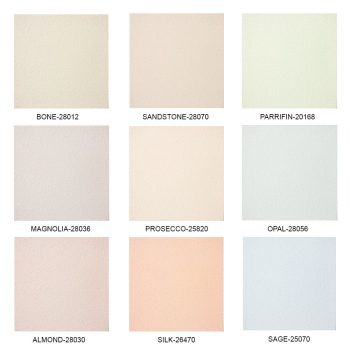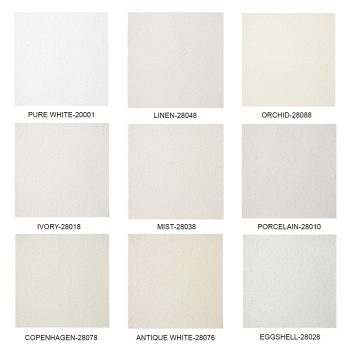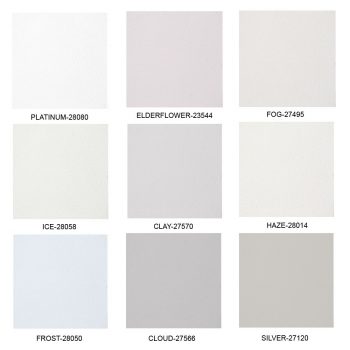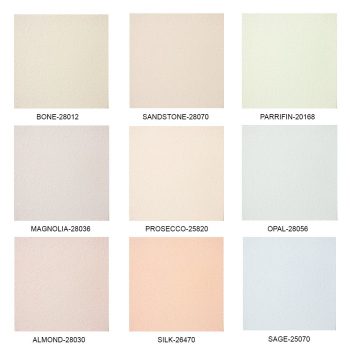What is Silicone Render?
What is Silicone Render?
There are many types of render on the market, all with different properties. The range includes older sand-cement style renders, scratch renders, and thin coat renders. Silicone Render is a ‘thin coat render’, which is applied on top of a basecoat at just a few millimetres thick. Silicone render is becoming ever more popular these days, so in today’s blog post, we will explain a little bit about it.
Why choose Silicone Render?
There are some significant advantages to using this product – there is little competition regarding the quality of the finish. Let’s take a look at some of the significant advantages:
- Silicone is breathable – Whereas cement and acrylic render completely seal off the wall and prevent it from breathing, silicone is very breathable. In turn, this allows vapour to escape through the surface. Therefore, the substrate can dry if needed, reducing the likelihood of water damage.
- Silicone is self-coloured – Unlike other renders that must be painted after curing, silicone render has the colour mixed into it, meaning just one coat and the job is done. Having the pre-coloured render means it lasts longer and won’t show if it is scratched, as the colour runs through the whole top coat. (for an idea of the cost of silicone render per square metre, read our dedicated blog post here)
- Silicone is easy to apply – Where other renders have a painting stage, thin coats can be done on a properly prepared wall in just a few hours. Despite a slightly higher cost, your job will be done in less time than a traditional render.
- Above all else, silicone looks great! It leaves the property looking like a new house.
How is it applied?
Silicone is a one-application thin coat render. It is dead easy for a qualified renderer to apply this render to a fully prepared wall. A basecoat should be applied on a typical wall to create a strong, stable, level surface to render. Once the base coat has dried, the silicone can be applied using a plastic float to create a thin and smooth finish. The thickness of the silicone top coat should be the same as the grain size of the render. So, a 1.5mm Silicone Render will be 1.5mm thick on the wall. The layer has to be applied in one go on each elevation; otherwise, you could end up with patches and lines where the render has been joined.
If you are interested in downloading an install guide, click here.
Different types of Silicone Render
You will have noticed that we offer several types of Silicone Render:
- EWI-040 Silicone Silicate Render
-
Silicone Silicate Render (EWI-040) – 25kg
Rated 5.00 out of 5From £71.99 Incl. VATFrom £59.99 Excl. VAT
- EWI-075 Silicone Render
-
Silicone Render (EWI-075) – 25KG
Rated 4.83 out of 5From £83.99 Incl. VATFrom £69.99 Excl. VAT
- EWI-076 Premium Bio Silicone Render
-
Premium Bio Silicone Render (EWI-076) – 25kg
Rated 4.00 out of 5From £113.39 Incl. VATFrom £94.49 Excl. VAT
- EWI-077 Nano Drex Silicone Render
-
Nano Drex Silicone Render (EWI-077) 25kg
Rated 4.57 out of 5From £151.19 Incl. VATFrom £125.99 Excl. VAT
These renders are manufactured by EWI Pro, who specialise in this type of thin coat render.
How much does Silicone Render cost?
Each silicone render has a different price point, which you can see below. Still, it is worth mentioning that all silicone renders will cost more than acrylic render because you are getting a vastly superior product.
Since a bucket of the 1.5m grain render typically covers 10 m2, considering the other products required, like basecoat and mesh, you will be paying between £10 – £15 per m2 – comparable to monocouche / scratch renders.
How much thin coat render do you need for a typical house?
This will come down to the area of the wall you are looking to cover. The render comes in 25kg pre-mixed buckets, and each bucket at our standard 1.5mm finish will cover around 8 square metres of wall. For an average semi-detached house of, say, 80m, you are looking at around ten render buckets. If you go for a finer grain size of 1mm, the render will go further, covering 11-12m of wall each. A thicker 2mm render will cover less area, so consider this when working out the quantities you need.
How does it compare to other types of render?
Silicone render offers superior water resistance and breathability compared to traditional sand and cement render. While sand and cement are cost-effective and robust, they lack silicone’s flexibility and vapour permeability, leading to potential cracking and moisture issues over time. Silicone’s advanced formulation ensures buildings stay dry and allows walls to breathe, reducing the risk of damp and mould growth.
Compared to monocouche render, which is also through-coloured and offers a textured finish in one coat, silicone render excels in flexibility and water repellence. Monocouche provides a hard-wearing surface with less likelihood of cracking than sand and cement but doesn’t match the silicone’s adaptability to temperature changes and environmental conditions, leading to superior long-term durability with silicone.
Acrylic render shares similarities with silicone, including various colours and textures. However, silicone outperforms acrylic in terms of breathability and moisture management. Acrylic renders are more affordable and provide a durable finish but can trap moisture, making silicone a better choice for buildings in wetter climates or those requiring higher levels of vapour permeability to prevent internal dampness.
Who makes Silicone Render?
Several brands are available, but we recommend the Silicone renders from EWI Pro. As mentioned, the specialists in Silicone renders are well-priced and offer all the advantages above. Plus we offer colour tinting and next day delivery on this product.
What colours does it come in?
The great thing about EWI Pro Silicone Render is that a vast range of colours is available. You can order a free colour chart and pick your colour. This sample will be mixed up and sent to you the next day. In most cases, we use our delivery drivers, not couriers.
You can buy EWI Pro Silicone Render online, in-store or by calling us. We are always happy to help with further questions, so leave a comment below!
Facebook
Twitter
LinkedIn
Your cart
Trade Account Login

We use cookies on our website to give you the most relevant experience by remembering your preferences and repeat visits. By clicking “Accept All”, you consent to the use of ALL the cookies. However, you may visit "Cookie Settings" to provide personalised consent.
Manage consent
Privacy Overview
This website uses cookies to improve your experience while you navigate through the website. Out of these, the cookies that are categorized as necessary are stored on your browser as they are essential for the working of basic functionalities of the website. We also use third-party cookies that help us analyze and understand how you use this website. These cookies will be stored in your browser only with your consent. You also have the option to opt-out of these cookies. But opting out of some of these cookies may affect your browsing experience.
Necessary cookies are absolutely essential for the website to function properly. These cookies ensure basic functionalities and security features of the website, anonymously.
| Cookie | Duration | Description |
|---|---|---|
| __stripe_mid | 1 year | This cookie is set by Stripe payment gateway. This cookie is used to enable payment on the website without storing any patment information on a server. |
| __stripe_sid | 30 minutes | This cookie is set by Stripe payment gateway. This cookie is used to enable payment on the website without storing any patment information on a server. |
| _GRECAPTCHA | 5 months 27 days | This cookie is set by the Google recaptcha service to identify bots to protect the website against malicious spam attacks. |
| apbct_cookies_test | session | CleanTalk sets this cookie to prevent spam on comments and forms and act as a complete anti-spam solution and firewall for the site. |
| apbct_page_hits | session | CleanTalk sets this cookie to prevent spam on comments and forms and act as a complete anti-spam solution and firewall for the site. |
| apbct_prev_referer | session | Functional cookie placed by CleanTalk Spam Protect to store referring IDs and prevent unauthorized spam from being sent from the website. |
| apbct_site_landing_ts | session | CleanTalk sets this cookie to prevent spam on comments and forms and act as a complete anti-spam solution and firewall for the site. |
| apbct_site_referer | 3 days | This cookie is placed by CleanTalk Spam Protect to prevent spam and to store the referrer page address which led the user to the website. |
| apbct_timestamp | session | CleanTalk sets this cookie to prevent spam on comments and forms and act as a complete anti-spam solution and firewall for the site. |
| apbct_urls | 3 days | This cookie is placed by CleanTalk Spam Protect to prevent spam and to store the addresses (urls) visited on the website. |
| AWSALBCORS | 7 days | This cookie is managed by Amazon Web Services and is used for load balancing. |
| cookielawinfo-checkbox-advertisement | 1 year | Set by the GDPR Cookie Consent plugin, this cookie is used to record the user consent for the cookies in the "Advertisement" category . |
| cookielawinfo-checkbox-analytics | 11 months | This cookie is set by GDPR Cookie Consent plugin. The cookie is used to store the user consent for the cookies in the category "Analytics". |
| cookielawinfo-checkbox-functional | 11 months | The cookie is set by GDPR cookie consent to record the user consent for the cookies in the category "Functional". |
| cookielawinfo-checkbox-necessary | 11 months | This cookie is set by GDPR Cookie Consent plugin. The cookies is used to store the user consent for the cookies in the category "Necessary". |
| cookielawinfo-checkbox-others | 11 months | This cookie is set by GDPR Cookie Consent plugin. The cookie is used to store the user consent for the cookies in the category "Other. |
| cookielawinfo-checkbox-performance | 11 months | This cookie is set by GDPR Cookie Consent plugin. The cookie is used to store the user consent for the cookies in the category "Performance". |
| ct_checkjs | session | CleanTalk–Used to prevent spam on our comments and forms and acts as a complete anti-spam solution and firewall for this site. |
| ct_fkp_timestamp | session | CleanTalk sets this cookie to prevent spam on the site's comments/forms, and to act as a complete anti-spam solution and firewall for the site. |
| ct_pointer_data | session | CleanTalk sets this cookie to prevent spam on the site's comments/forms, and to act as a complete anti-spam solution and firewall for the site. |
| ct_ps_timestamp | session | CleanTalk sets this cookie to prevent spam on the site's comments/forms, and to act as a complete anti-spam solution and firewall for the site. |
| ct_sfw_pass_key | 1 month | CleanTalk sets this cookie to prevent spam on comments and forms and act as a complete anti-spam solution and firewall for the site. |
| ct_timezone | session | CleanTalk–Used to prevent spam on our comments and forms and acts as a complete anti-spam solution and firewall for this site. |
| elementor | never | This cookie is used by the website's WordPress theme. It allows the website owner to implement or change the website's content in real-time. |
| viewed_cookie_policy | 11 months | The cookie is set by the GDPR Cookie Consent plugin and is used to store whether or not user has consented to the use of cookies. It does not store any personal data. |
Functional cookies help to perform certain functionalities like sharing the content of the website on social media platforms, collect feedbacks, and other third-party features.
| Cookie | Duration | Description |
|---|---|---|
| __zlcmid | 1 year | This cookie is used by Zendesk live chat and is used to store the live chat ID. |
| bcookie | 2 years | LinkedIn sets this cookie from LinkedIn share buttons and ad tags to recognize browser ID. |
| bscookie | 2 years | LinkedIn sets this cookie to store performed actions on the website. |
| lang | session | LinkedIn sets this cookie to remember a user's language setting. |
| lidc | 1 day | LinkedIn sets the lidc cookie to facilitate data center selection. |
| UserMatchHistory | 1 month | LinkedIn sets this cookie for LinkedIn Ads ID syncing. |
Performance cookies are used to understand and analyze the key performance indexes of the website which helps in delivering a better user experience for the visitors.
| Cookie | Duration | Description |
|---|---|---|
| __utma | 2 years | This cookie is set by Google Analytics and is used to distinguish users and sessions. The cookie is created when the JavaScript library executes and there are no existing __utma cookies. The cookie is updated every time data is sent to Google Analytics. |
| __utmb | 30 minutes | Google Analytics sets this cookie, to determine new sessions/visits. __utmb cookie is created when the JavaScript library executes and there are no existing __utma cookies. It is updated every time data is sent to Google Analytics. |
| __utmc | session | The cookie is set by Google Analytics and is deleted when the user closes the browser. It is used to enable interoperability with urchin.js, which is an older version of Google Analytics and is used in conjunction with the __utmb cookie to determine new sessions/visits. |
| __utmt | 10 minutes | Google Analytics sets this cookie to inhibit request rate. |
| __utmv | 2 years | The __utmv cookie is set on the user's device, to enable Google Analytics to classify the visitor. |
| __utmz | 6 months | Google Analytics sets this cookie to store the traffic source or campaign by which the visitor reached the site. |
| sib_cuid | 6 months | Purechat uses this cookie to send data to purechat.com, to connect visitors to the reservation team and track visitors to stay on portal. |
| SRM_B | 1 year 24 days | Used by Microsoft Advertising as a unique ID for visitors. |
Analytical cookies are used to understand how visitors interact with the website. These cookies help provide information on metrics the number of visitors, bounce rate, traffic source, etc.
| Cookie | Duration | Description |
|---|---|---|
| _ga | 2 years | The _ga cookie, installed by Google Analytics, calculates visitor, session and campaign data and also keeps track of site usage for the site's analytics report. The cookie stores information anonymously and assigns a randomly generated number to recognize unique visitors. |
| _gat_gtag_UA_61069204_2 | 1 minute | Set by Google to distinguish users. |
| _gat_UA-61069204-2 | 1 minute | A variation of the _gat cookie set by Google Analytics and Google Tag Manager to allow website owners to track visitor behaviour and measure site performance. The pattern element in the name contains the unique identity number of the account or website it relates to. |
| _gcl_au | 3 months | Provided by Google Tag Manager to experiment advertisement efficiency of websites using their services. |
| _gid | 1 day | Installed by Google Analytics, _gid cookie stores information on how visitors use a website, while also creating an analytics report of the website's performance. Some of the data that are collected include the number of visitors, their source, and the pages they visit anonymously. |
| _uetsid | 1 day | This cookies are used to collect analytical information about how visitors use the website. This information is used to compile report and improve site. |
| CONSENT | 2 years | YouTube sets this cookie via embedded youtube-videos and registers anonymous statistical data. |
Advertisement cookies are used to provide visitors with relevant ads and marketing campaigns. These cookies track visitors across websites and collect information to provide customized ads.
| Cookie | Duration | Description |
|---|---|---|
| _fbp | 3 months | This cookie is set by Facebook to display advertisements when either on Facebook or on a digital platform powered by Facebook advertising, after visiting the website. |
| ANONCHK | 10 minutes | The ANONCHK cookie, set by Bing, is used to store a user's session ID and also verify the clicks from ads on the Bing search engine. The cookie helps in reporting and personalization as well. |
| fr | 3 months | Facebook sets this cookie to show relevant advertisements to users by tracking user behaviour across the web, on sites that have Facebook pixel or Facebook social plugin. |
| MUID | 1 year 24 days | Bing sets this cookie to recognize unique web browsers visiting Microsoft sites. This cookie is used for advertising, site analytics, and other operations. |
| NID | 6 months | NID cookie, set by Google, is used for advertising purposes; to limit the number of times the user sees an ad, to mute unwanted ads, and to measure the effectiveness of ads. |
| test_cookie | 15 minutes | The test_cookie is set by doubleclick.net and is used to determine if the user's browser supports cookies. |
| uuid | 6 months | MediaMath sets this cookie to avoid the same ads from being shown repeatedly and for relevant advertising. |
| VISITOR_INFO1_LIVE | 5 months 27 days | A cookie set by YouTube to measure bandwidth that determines whether the user gets the new or old player interface. |
| YSC | session | YSC cookie is set by Youtube and is used to track the views of embedded videos on Youtube pages. |
| yt-remote-connected-devices | never | YouTube sets this cookie to store the video preferences of the user using embedded YouTube video. |
| yt-remote-device-id | never | YouTube sets this cookie to store the video preferences of the user using embedded YouTube video. |
| yt.innertube::nextId | never | This cookie, set by YouTube, registers a unique ID to store data on what videos from YouTube the user has seen. |
| yt.innertube::requests | never | This cookie, set by YouTube, registers a unique ID to store data on what videos from YouTube the user has seen. |
Other uncategorized cookies are those that are being analyzed and have not been classified into a category as yet.
| Cookie | Duration | Description |
|---|---|---|
| _clck | 1 year | No description |
| _clsk | 1 day | No description |
| _uetvid | 1 year 24 days | No description available. |
| AnalyticsSyncHistory | 1 month | No description |
| apbct_pixel_url | session | No description |
| apbct_visible_fields_0 | session | No description |
| apbct_visible_fields_1 | session | No description |
| apbct_visible_fields_10 | session | No description |
| apbct_visible_fields_2 | session | No description |
| apbct_visible_fields_3 | session | No description |
| apbct_visible_fields_4 | session | No description |
| apbct_visible_fields_5 | session | No description |
| apbct_visible_fields_6 | session | No description |
| apbct_visible_fields_7 | session | No description |
| apbct_visible_fields_8 | session | No description |
| apbct_visible_fields_9 | session | No description |
| ct_checked_emails | session | No description |
| ct_has_scrolled | session | No description |
| ct_mouse_moved | session | No description |
| ct_screen_info | session | No description |
| ictf_master | never | No description available. |
| li_gc | 2 years | No description |
| m | 2 years | No description available. |
| SM | session | No description available. |
| testinfinitycookie | session | No description |
| woocommerce_show_tax | 7 days | No description available. |
| wp_woocommerce_session_c5ac76b408021294cb56bcc27eddf8a1 | 2 days | No description |






13 thoughts on “What is Silicone Render?”
1mm Silicone render goes on great.
High quality gear.
What colours does the silicone render come in?
Have a look on this page https://ewistore.co.uk/shop/ewi-075-silicone-render-25kg/ to view our selection of coloured renders.
I had silicone render installed with Wetherby system a few years ago and I am really struggling to get a hold of the contractor who did the works, as I am trying to get the coloured render of the same colour to apply to the new extension. Is the render as in the silicone render you sell in the colours could be matched with the silicone render that has alreAdy been installed?
I am looking to get a coloured render for my pebbledash property. From what I understand, i need to apply a basecoat layer to the existing peppledash and then put this coloured render on top. I guess my fear is that what if the pebbledash were to drop off of the wall, then the new render would also drop off. Is there anything I can do to secure the pebbledash in place better so i can be sure my new render finish isn’t ruined in the first week of putting it all on the wall?
thanks for your help
Paul
Hi Paul, have a read of this blog post it should answer your question!
The silicone in ivory is the one the customers i find choose the most
Would this stop rust bleeding through?
silicone render best render ever
Thank you – Which one of our silicone render products did you use?
Fantastic information about silicone render products thanks
Glad to hear it! If you have any further questions feel free to contact us.